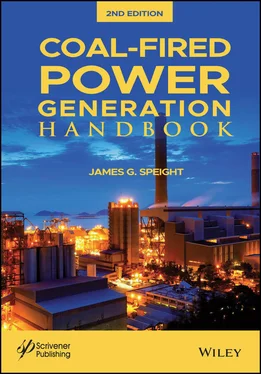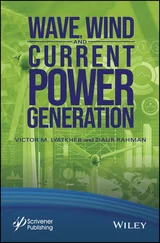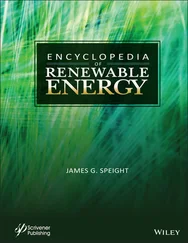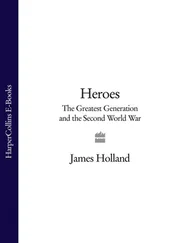The multi-louver dryer is suitable for large volumes and for the coals requiring rapid drying. The coal is carried up in the flights and then flows downward in a shallow bed over the ascending flights. It gradually moves across the dryer, a little at each pass, from the feed point to the discharge point.
In the cascade dryer, wet coal is fed to the dryer by a rotary feeder; as the shelves in the dryer vibrate, the coal cascades down through the shelves and is collected in a conveyor at the bottom for evacuation. Hot gases are drawn upward through and between the wedge wire shelves.
In the flash dryer the wet coal is continuously introduced into a column of high- temperature gases and moisture removal is practically instantaneous.
Table 3.6 Different types of moisture in coal and methods for removal (Karthikeyan et al ., 2009).
| Category |
Location |
Common name |
Removal method |
| Interior adsorption water |
Micropores and microcapillaries within each coal particle. |
Inherent moisture |
Thermal or chemical |
| Surface adsorption water |
Particle surface. |
Inherent moisture |
Thermal or chemical |
| Capillary water |
Capillaries in coal particles. |
Inherent moisture |
Thermal or chemical |
| Interparticle water |
Small crevices found between two or more particles. |
Surface moisture |
Mechanical or thermal |
| Adhesive water |
Film around the surface of individual or agglomerated particles. |
Surface moisture |
Mechanical or thermal |
Finally, understanding the composition of water in coal facilitates the effective removal of coal moisture: as the moisture exits in different states the corresponding method must be chosen for moisture removal ( Table 3.6) (Karthikeyan et al ., 2009). As a result, dryer type must be chosen according to the task at hand to produce the most effective feedstock for the power plant (Osman et al ., 2011).
The rotary dryer is the most established dryer type and one of the most common for general applications. The basic design consists of an insulated cylindrical shell that is mounted on rollers and rotates at a low speed. Rotary dryers allow direct and/or indirect contact between the drying medium and the wet particles, although the former is more common in industry.
In the direct rotary dryers, the wet material is in direct contact with the drying medium. Direct heat transfer is usually provided by a hot gaseous medium blown into the vessel from the gas inlet. For drying of low-rank coal, the drying medium must be free of oxygen to prevent spontaneous ignition and combustion during storage ( Chapter 4). Flue gases or heated air are the most common drying medium and in principal suitable for application to low-rank coal. However, there are reports of fires and explosions from oxygen contacting hot coals especially during start-up and shut down from such a system (Wilver and Brumbaugh, 1985). To avoid such accidents, one must ensure that the coal is sufficiently cooled before exposure to the environment.
Gas can flow in the direction of feed progression (parallel flow), or in the opposite direction (counter-flow). Although counter-current flow offers higher thermal efficiency, parallel flow prevents the overheating of the coal near the exit of the dryer.
Typically, an indirect rotary dryer consists of a jacketed shell through which steam or other heating medium flows. At any one time, a small fraction of solids are exposed to the heated wall, resulting in low heat transfer rates and low drying efficiency. One way to improve the performance of an indirect dryer is to increase the area of contact between the heated wall and the particles. This is accomplished by introducing a series of tubes through the rotary shell and passing steam through the tubes. In the steam-tube dryer, wet solids are lifted and showered within the rotary shell in the usual sense, and heated by radiant heat and contact with the outer surfaces of the tubes.
Rotary dryers designed for continuous processing are usually slightly inclined so that as the main vessel rotates, feed material progresses from the higher end of the vessel to its lower end. In such a system, the particles are conveyed by repetitive lifting and falling action provided by the circumferentially mounted flights and the force of gravity. The periodic lifting and showering of the material creates a curtain of particles through which hot gas flows. This agitation leads to higher efficiencies, increased heat transfer rate, and reduced processing time compared to stationary units. Thus, feed material is heated and dried as it progresses through the dryer.
3.6.2 Fluidized Bed Dryers
Fluidized bed drying is ideal for a wide range of particulate or granular solids and has found widespread usage in various industries, including those dealing with chemicals, pharmaceuticals and bio-chemicals, food and dairy products, and polymers. This is mainly due to high temperatures and high rates of mass transfer as a result of vigorous gas-solid mixing. Fluidized bed dryers can compete successfully with more conventional dryer types (e.g., rotary, tunnel, conveyor) in the drying of powders, granules, agglomerates, and pellets, with particles averaging between 50 to 5000 microns. Both heat sensitive and non-heat sensitive products can be dried using one or more of the variations of fluidized bed dryers (Osman et al ., 2011).
Each design has strengths and weaknesses and implementation is highly dependent on feed and product requirements. Other advantages include smaller footprint, relatively lower capital and maintenance cost, and ease of control. Among the major issues in fluidized bed drying are (i) high power consumption, (ii) increased gas handling requirements, (iii) tendency to cause product attrition, and (iv) low flexibility in terms of feed type (size and shape) that can be handled.
The performance of fluidized beds, usually characterized by the quality of fluidization, depends on the size and shape of the feed particles, which is apparent in coal drying. To facilitate fluidization of the bed, the most straightforward way is to grind and sieve raw coal before feeding into the drying vessel. Fluidization quality can also be improved by employing mechanical vibrations, agitation, or use pulsating flow of fluidizing gas (Osman et al ., 2011).
There has been, and continues to be, high interest in the utilization of microwave. Such overwhelming interest is understandable considering the advantages microwave-related drying systems offer over conventional ones. Conventional drying methods employ surface heating, and are generally a slow process since the rate of heat transfer from the surface to the core of the material is dependent on (i) the process parameters, (ii) the particle size of the coal, and (iii) the properties or type of the coal.
In microwave heating, volumetric heating is achieved and energy is preferentially transferred to moisture in the material without the need to heat the material first, resulting in shorter drying time. Capital and operating costs due to use of the highest form of energy (electricity) in microwave drying remain an impediment despite its technical advantages. It has been reported that the use of microwave energy for drying coal can also result in hot spots and, thus, local overheating of the coal and can be a disadvantage in the selection of this type of dryer for coal application (Osman et al ., 2011).
In most microwave drying applications, the feed is usually not stationary – microwave heating is known to be uneven, and tends to form regions of underexposure ( cold spots ) and overexposure ( hot spots ). By keeping the material in constant motion relative to the microwave-guides, more even heating can be achieved. This relative movement is usually achieved by placing the material on a rotating plate or conveyor, and passing it under the microwave guides.
Читать дальше












